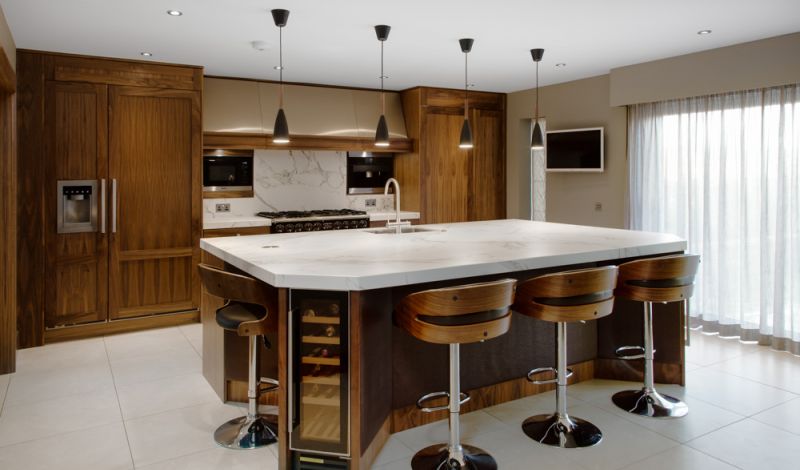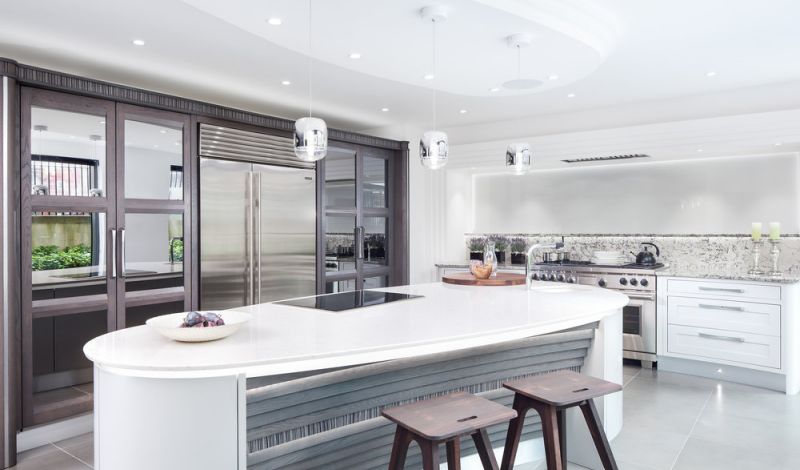Essential Steps to Designing your Dream Kitchen Island
 12
12Oct '17
“Function should always lead over form,” said TV Property Expert Michael Holmes during his talk at last week’s AGM. This very rule should be your starting point when thinking about introducing an island to boost both the convenience and style of your kitchen.
Deciding on your kitchen island’s function
The main functions of kitchen islands are usually prep work, cooking, eating and/or entertaining. But there is no reason why you can’t aspire to have one that offers all of the above. When designing a space for the family, for example, there are versatile designs that both enhance the group dining experience as well as offer a workspace for the children’s homework.
Although, the island has its own traditional dining function, it should complement the surrounding elements that help form your kitchen. Therefore, it's important to bear in mind the complete design context during the planning stage.
What next?
Once you've zeroed in on the desired function(s) of your kitchen island, you'll be able to focus on other aspects. For example, if you know for certain that you'd like it to feature a breakfast bar or a place for casual meals, then you ought to consider how seating will affect the design.
Bar stools are a popular option and their integration in the initial design stages is important in regard to comfort and dimensions. The height of said seats is usually a choice between 36 or 42 inches, with the latter offering more flexibility with the option of splitting the island into two levels. The extra wall space left between the lower surface area and higher bar side can create an opportune place for electrical outlets.
Get the most out of your kitchen island
You'll get the most out of your kitchen’s new addition by ensuring all of its components work with the overall design of the room.
Your kitchen island should work in sync with the opposite counter, hence the popularity of placing cooking appliances on the side of your existing kitchen surface, and using the island as a wide-spaced prep area.
If your kitchen is spacious, an efficient option is to use your island to double-up the appliances, adding an additional sink or under counter fridge if the main one is too far to reach with ease.
Incorporating appliances into your kitchen island will require extra consideration in terms of what can go where based on potential issues with plumbing or electrical wiring.
Once you have some ideas in terms of functionality, consider how you can add efficiency, adding and maximising space to rest kitchen utensils and a chopping board, for instance.
The requirements of your appliances might compete with the need for increased storage, however, the significance of this issue is reduced if the kitchen has ample room for cabinetry around the walls. As this would then allow you to utilise the kitchen island as an area for productivity.
General design sizes to go by
The size of the room will affect what you can achieve in terms of maximising space with your kitchen island. There are, however, some general guidelines from top designers that you can adopt to ensure you get the most out of your space.
A kitchen island at typically 3 feet wide and 4 feet in length gives a great proportioned look. However, a 2-foot width can also be a reasonable size to accommodate a smaller space; while a larger space would benefit from 7 feet in length if the kitchen island is appliance-heavy.
You'll want to ensure that you have enough room to move around freely between your kitchen surfaces, hence why designers tend to aim for 3 feet of open floor space around the island.
Get in Touch to Achieve Your Dream Kitchen
Our exceptional retailers have ample experience in creating bespoke kitchens and have consistently shown their ability to build a stylish and functional kitchen island that not only matches but exceeds your expectations and desires. Contact us today to find out more!
Images supplied by;
Diane Berry Kitchens
Callum Walker Interiors
Kitchens International


